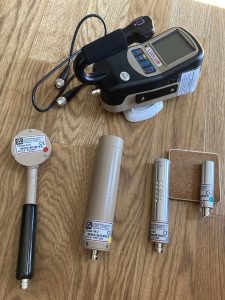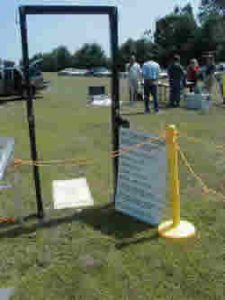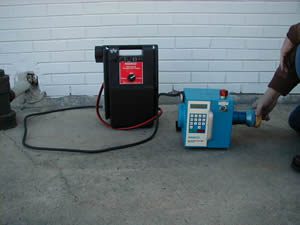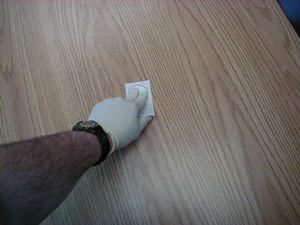
Survey Instruments
VDH assigns Ludlum model 3001 survey meters to field teams deployed to measure and evaluate environmental conditions during and after radiological emergencies. These survey meters are paired with one of four different types of probes. Each probe has a specific use and range of measurement. By pairing the appropriate probe with the survey meter field team personnel can evaluate the radiation levels within a given geographical area or measure the amount of radiation given off by different items including radiation sources, different types of environmental samples, and unknown objects.

Portal Monitor
VDEM provides certain localities with portal monitors to survey large numbers of people expected at designated evacuation assembly centers. These facilities are associated with emergency preparedness for nuclear power plant accidents. The portal monitors can survey a person in 5 seconds, while an emergency worker with a survey meter and pancake probe will take about 3 minutes.

Air Pumps

Air pumps are used to measure airborne particulate radiation and radioactive-iodine.
I
Smears/Swipes
 Swipes and smears are small pieces of paper that can be gently rubbed across the surface of an object whenever there is suspected contamination, These papers can then be measured using a survey instrument like the one shown above to determine if loose contamination is present and to quantify the level of contamination. The swipe can also be sent to a laboratory for further analysis.
Swipes and smears are small pieces of paper that can be gently rubbed across the surface of an object whenever there is suspected contamination, These papers can then be measured using a survey instrument like the one shown above to determine if loose contamination is present and to quantify the level of contamination. The swipe can also be sent to a laboratory for further analysis.
Office of Radiological Health | 109 Governor Street, 7th Floor | Richmond, VA 23219
Telephone (804) 864-8150 | Fax: (804) 864-8155
